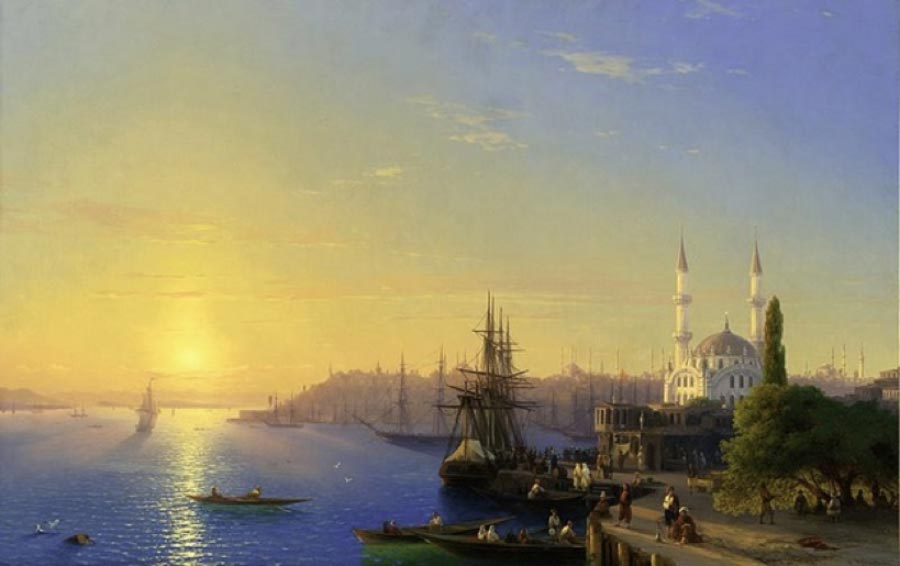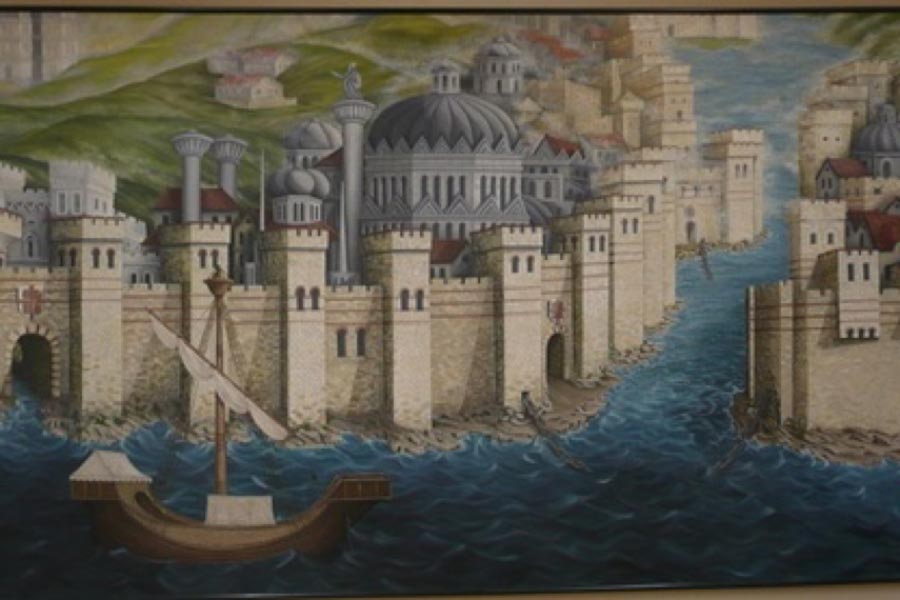
Istanbul: Gateway to History, Memory and Magic
For a moment, if one could conjure up in one’s mind's eye Istanbul, a city of magic, mystery, strategic geographical importance, and historic consequence: Standing on the Galata Bridge, facing north, one gazes in the direction of the Black Sea, on whose far shores lie Ukraine and the Crimea; Bulgaria and Romania a little west of north and Russia to the northeast. To the right one points to Asia, home of a storied history that is being reconsidered and deciphered more every day as new and exciting archaeological discoveries are being brought to light. This region is Anatolia, also called Asia Minor or, in Turkish, Anadolu.

To the left lies Europe, old Trakya 1900 (Public Domain) and to the right lies Asia, old Anatolia (Public Domain)
To the left lies Europe, with its own rich and varied story. Here lies the portion of Turkey called Thrace, or, in Turkish, Trakya. It consists of only three per cent of the Turkish land mass but is home to 10 per cent of its population. To the south, the Sea of Marmara connects with the Black Sea at the Bosporus Strait, the famous Golden Horn, and flows into the Aegean through the Dardanelles Strait and thence to the Mediterranean.

Trade along the Bosporus (1872) (CCO)
Effects of the Deluge: The Contours of the City
If a theory called the Black Sea Deluge Hypothesis, proposed in 1997 by William Ryan and Walter Pitman, proves to be correct, then modern-day Turkey was quite different and much more tumultuous some 7,200 years ago. The theory states that both the Black Sea and the Caspian Sea to the east were fresh-water lakes fed by glacial melt water that ran into the Aegean Sea and, later, as the glaciers receded, up into the North Sea. This outflow caused the water level to drop. Because this was well into the time period when humans lived on this land, they built cities and prosperous towns along what were then shoreline areas but are now under water. Sea levels around the world were rising due to the breakup of the Laurentide Ice Sheets in Canada and North America, and the Mediterranean was no different. All that separated it from the Black Sea was a rocky sill at what is now called the Bosporus. One day the barrier was inundated. A flow of water 200 times greater than that of North America's Niagara Falls poured through in a flood that lasted a full year. The Black Sea experienced a sudden and catastrophic flood that quickly drowned unsuspecting human habitations and may have inspired tales of what would later come to be described as a world-wide flood in the Epic of Gilgamesh and the early chapters of the Bible.

A mural in the Istanbul Archaeology Museums depicting the seaward walls of the Byzantine capital, the Golden Horn with its chains and the Genoese Colony of Galata in the 14th-15th centuries. (Argos'Dad / CC BY-SA 3.0)
Not everyone accepts this theory, of course. The Late Pleistocene Great Flood Theory, advanced in 2003, argues that more than 14,000 years ago the Black Sea was a brackish lake, rapidly drowned by glacial melt water from the Caspian Sea by way of the Manych-Kerch Spillway. This, claims the authors of the theory, was the basis for the great flood legends.




